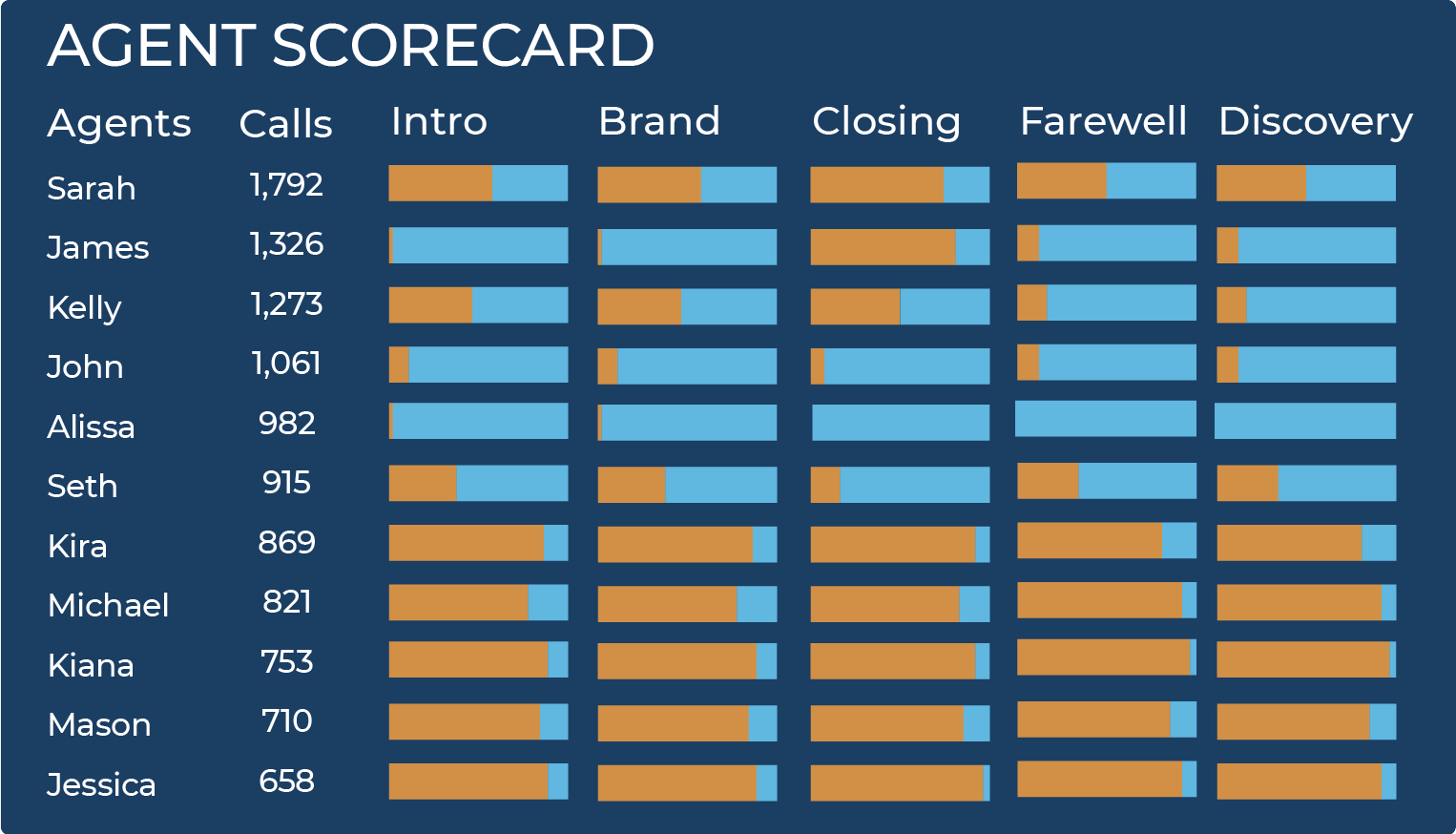Why Agent Experience is Just as Important as Customer Experience
When addressing your employee’s experience, it’s important to understand that it’s not something that can be fully understood through a single score, such as an Employee Net Promoter Score (eNPS). However, it’s crucial to start somewhere, as monitoring your employee experience (EX) is the first line of defense for your enterprise’s customer experience (CX). A McKinsey report has shown that engaged and satisfied call center employees are 8.5x more likely to stay, rather than leave within one year. Here are five different ways to monitor your call center EX, and suggestions as to which would work best for what kind of company. From there, you can combine these efforts to create valuable actionable insights toward improving EX.
When they’re engaged and satisfied, employees are
8.5x more likely to stay longer
Apply an eNPS Survey
An eNPS is a quick and standardized score that can be collected based on an employee survey. Similar to customer satisfaction surveys, eNPS are collected as a snapshot of employee relations at that time, however it commonly doesn’t represent the full experience. To gain a full understanding and 360º view of your employee’s experience, the eNPS should have another baseline score or previous results to compare against. Without it, they only tell you a fraction of the story.
The solution and pair to an eNPS score is a solid speech analytics solution in place. With a speech analytics BI tool in place, your enterprise will be able to pair their eNPS with sentiment analysis via voice analytics to reveal detailed insights about employee engagement on calls that could lead to information about employee happiness, wellness, and overall experience at the company.
Additionally, using speech analytics to extract a satisfaction score for 100% of agent interactions can give you insight into employee experience without the need to send out a survey.
RECOMMENDED FOR
- Small, growing startups
- Quick employee check-ins
NOT RECOMMENDED FOR
- Large enterprises looking for actionable insights
Implement Text Analytics Tools
Many companies have multiple third-party sites available for employees to leave reviews on, such as Glassdoor, AngelList and more. There are BI tools available to be able to centralize that information so that HR can ingest them all into a natural language processing (NLP) text analytics tool to identify self-reported data points like emotion, sentiment, and score the positive or negative reviews individually or as a whole. HR organizations can then use these stats to set benchmarks for the company to monitor and track changes over time.
RECOMMENDED FOR
- Companies that have public profiles
- Out-of-the-box solution to work with data you have
NOT RECOMMENDED FOR
- Insights that are directly related to current employee performance

Listen In With Speech Analytics
If you choose not to develop an eNPS survey, you can implement a speech analytics tool, like VoiceBase, to monitor employee performance without the additional step of asking employees to fill out a survey. Organic feedback directly from employee conversations with customers or online reviews often has more powerful information than a canned survey.
Additionally, for organizations with workforces that often engage in customer calls, voice analytics can spot needs for more support or employee coaching, providing leadership ways to take action in helping improve employee experience before it’s too late.
RECOMMENDED FOR
- Companies of all sizes
- Centers with high call volumes
NOT RECOMMENDED FOR
- Organizations without access to call recordings
Review the Right Metrics
Every eNPS isn’t built the same, and if you’d like to get some additional insights beyond the standard scoring, you can develop a survey or form that asks more about subjective and deeper information that can be paired with existing objective data. These insights into the psychology of your employees will provide the “why” to data that may not be immediately visible through numbers and patterns. Try developing lines of questioning related to company culture, how they feel about their future prospects, and even what motivates them to do their work.
RECOMMENDED FOR
- Enterprises with time to properly execute
NOT RECOMMENDED FOR
- Organizations who need quick results to act on immediately
- Cut-and-dry answers

Review Agent Scorecards
As part of a speech analytics tool is the ability to organize your call center agents in a dashboard that creates scorecards for agent performance and KPIs. Monitoring these metrics, such as Average Handle Time, Average Time on Hold, and their Customer Satisfaction Score, is a first line of defense and indication that an employee may be struggling. Tracking their performance helps to define what areas to address to determine an employee’s experience.
RECOMMENDED FOR
- Enterprises with existing agent performance metrics
NOT RECOMMENDED FOR
- Organizations without an automated agent tracking performance tool


